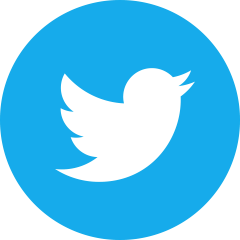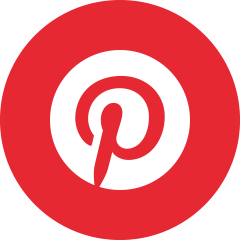The Power of Nature to Restore the Human Spirit
A story about our relationship with nature, about our journey in the universe, and about being human. We forget that who we are today is the result several millions of years of evolution. And as we consume and destroy our planet, the creatures we hurt the most are ourselves. We are part of Nature, and it is part of Us.
PHOTOGRAPHY IS AN EXCHANGE BETWEEN A SUBJECT AND AN OBSERVER.
In my case, my subject is wildlife and in the following portraits there is a dialogue between myself and the animal I am photographing.
One day, as I am sitting on the beach, just a couple of feet away from a seal, I sense that my presence is no longer a threat and from there, a connection, a line of communication is established. It observes me. I observe it. It makes a move and waits. I make a move and wait. It is like a dance. I begin to sense its body language as its stares at me with its big black eyes. For a moment, I feel like we are having a conversation.
There is no longer the animal and me, but Us. We are all part of the same world, we share this beach, this ocean, the air.
Our existence is bound to each other, to this Planet. Our goal is the same, to survive, to live and to procreate.

During my tour of northern Argentina, I was invited to visit a rehabilitation center for wild animals in Candelaria. Among the residents were two jaguars. I sat down by the cage, only inches away from them. For the next hour, they showed me their teeth and tried to intimidate me. But after a while, after talking to them and showing no threat, the male laid down and relaxed.



The capybara is the largest rodent in the world. They’re the preferred prey of jaguars and anacondas and are found throughout most of South America, with the exception of Chile. When I was at Las Marias, I spent much time photographing and filming them. Sitting on the grass in a group of about twenty animals, they surrounded me, moving around, alternating between resting, eating, and swimming.

Admiralty Island in Alaska was called Kootznoowoo by the native Tlingit people, meaning “Fortress of the Bears.” Kayaking from Juneau, I paddled south to Pac Creek and camped on Windfall Island for a week. Every morning, I would kayak to the creek and wait for the bears. This was my first grizzly encounter.

During a visit to the Province of Misiones in Argentina, I was offered a private tour of the Guira Oga Refuge Center. The refuge is home to wild animals from the jungle who unfortunately got caught too close or mixed-in with the complicated lives of nearby city dwellers. Most of the time, the center is called after an animal has been shot but found still alive. Among the residents onsite are monkeys, ocelots, anteaters, birds of all sorts, foxes and others.
As with most of my photography, my philosophy is always the same — I didn’t want to take the shot, I wanted to receive it. I do my best not to provoke or push the animal into a defensive or an aggressive state. So after getting permission from the center I slowly entered the bird’s temporary habitat and sat on the ground.
I must have been in there for about an hour, as time just flew by. It was obvious that the bird didn’t want to be there and I think it is what I captured — the locked in wilderness. The ones who are not meant to be prisoners but free to roam the sky or the jungle. The depth of its stare, reaching into my soul — one word come to my mind — anger.
Realizing that I had been given an incredible photo, I thanked the bird and made my way out hoping that one day, sooner than later, his wish would come true and that he would find his way back into the sky, soaring into the sun.

I spent a month on Antelope Island photographing bison. Every night, I would hear the coyotes, but it was impossible to approach them during the day—they were always on the move and would disappear the minute they saw me. But on this day, the wind blew furiously and I was able to get close to this lone animal. Perhaps it was because of the strong wind, because while he clearly noticed my camera, he stayed his course and walked past me.




Bison have incredible eyesight and it’s quite hard to approach them without being seen. My strategy was pretty much the same every day: find a group of bulls, determine which way they were moving, locate some bushes far ahead in their path, then crawl on all fours and wait for them to pass.

Yacare Pora is a private caiman farm in the Province of Corrientes in Argentina. Black caimans were at the edge of extinction by the end of the 20th century in Argentina, but thanks to poaching controls and successful conservation management programs (like this farm), the reptile has recovered.

Paddling the Washington State coast, I spent a night on Destruction Island, located three miles west of Ruby Beach. Approaching the island, I noticed a large floating mass—what turned out to be a group of at least 100 sea otters hanging out on the surface. I was only able to capture a few shots before they noticed my camera and swam away.

I had the honor of tagging along with a BBC filming team as they were trying to capture the dusky dolphins feeding on a big ball of anchovies in the Golfo Nuevo in Argentina. The BBC team never got the shot they wanted, but I was pretty excited about this one.

Kayaking from Sitka to Hoonah, we paddled into the Cross Sound and through the Inian Islands in Alaska. We came across these sea lions just outside of Mosquito Cove. The tide was ripping and we knew we couldn’t stay there for long as the place is known for its incredible current. Still, I managed to stick around for a while and photograph these sea lions.

THE WILD IMAGE PROJECT
Ever since I was a young boy, I found my inspiration and comfort in nature. It thought me about life, and death, about change and evolution, about challenges and perseverance. It taught me about perspective and balance. Most importantly, it taught me about being humble and spiritual.
I started the Wild Image Project so that I could tell a story. A story about our relationship with nature, about our journey in this universe, a story about being human. Humans love to see the world within a limited frame, within a world that they can explain, control and manipulate. We forget that who we are today is the result of a process that has lasted several millions of years. We are also, just a chapter in the story of evolution. It is fair to say that if we had the ability to look into the future, most likely, we would discover that our appearance has evolved, changed, just like we have changed physically and mentally since the time we came down from the trees.
As our world is changing, so are we. Change is always hard. Change is by nature an unwelcome force. But change is also the reason why we know so much and why we are so good at surviving — it forces us to adapt and thrive.
Our unsustainable lifestyle has led us to re-question our values, the way we consume and the way we live. It is not just the last 50 years that have been damaging our planet, but the last 3,000, ever since we started to put Man as the perfect creation and saw nature as an imperfect reality: cruel, inhuman, obsolete… Since then, we have consumed our planet earth and manipulated her with no respect, believing that this land was only for our benefit. Just like a teen, who decides to egotistically deny his heritage and sees himself as the source of truth, we have strayed away from our roots bragging about our superiority.
In this period of change, it is important to remember that as we consume and destroy our planet, the people we hurt the most are ourselves. The planet will take a couple of thousands of years to recuperate, but we won’t. In fact, it has been proven, that the moment Man disappears, nature will flourish again. If we want the world to participate in this journey of growth, we have to change our way of thinking. We have to stop seeing ourselves as saviors of the planet. This change of lifestyle must be embraced, not because it will save the planet, but because it will assure our survival and provide a promising future for our children.
The story I want to tell is a story of hope and of unity. We are part of Nature, and it is part of Us. It is my own way of making the world a better place.
You can read more about the Wild Image Project here.











